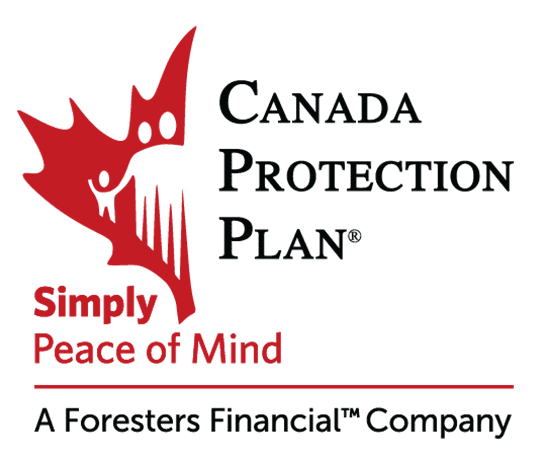A
Accidental Death Benefit
An insurance benefit that pays the benefit amount in the case that death occurs by accidental means. If this benefit is added to a life insurance policy, then the accidental death benefit is payable in addition to the life insurance policy benefit. It is common to exclude certain conditions, such as suicide or death due to poison or drugs or war, from Accidental Death Benefit coverage
Agent (Advisor, or Life Insurance Agent, or Broker)
An individual who is licensed by a provincial or territorial regulator to sell life insurance policies to consumers.
Applicant
The individual or party applying for a life insurance policy.
Automatic Premium Loan
A feature in a permanent life insurance policy that takes a loan automatically against the cash value (when exists) to pay for overdue premiums to prevent the life insurance policy being lapsed.
B
Beneficiary
The person or party designated to receive the proceeds of a life insurance policy.
Benefit
Is the proceeds of a life insurance policy which may include the sum insured of the base policy plus any optional coverage such as term rider when an insurance claim is approved. If eligible, other complimentary benefits as specified in the policy contract may also be available. An example of complimentary benefits is terminal illness benefit.
Broker
See Agent.
C
Cash Surrender Value (or Cash Value)
A benefit that is included in some permanent life insurance policies that allows a policyholder to surrender the policy and receive an amount of money net of any policy loans or overdue premiums.
Child Insurance Rider (or Children Rider)
A benefit that provides life insurance coverage on the lives of all covered children. Typically, the coverage applies to all of the children of the Life Insured.
Claim
A request for payment of benefits under the terms of a life insurance policy.
Contestability
Contestability is a legal right of an insurance company to contest the insurance coverage when incomplete or incorrect information are provided in the insurance application process. Policies usually have a 2-year contestability period. After that, the coverage cannot be contested except in the case of fraud (a deliberate misstatement of fact). An example of fraud is a smoker who declares a non-smoker in the application.
Contract
An insurance contract is the legal agreement with an insurance company that sets out the terms of the coverage. The contract usually includes the application, policy and any subsequent changes made to the policy.
Convertible
A feature of some term life insurance policies that allow them to be changed or converted into a permanent life insurance policy, without providing proof of health.
Coverage
The amount of basic life insurance benefit provided by an insurance policy.
D
Death Benefit
The benefit amount payable upon the death of the Life Insured.
Dividend
Money made available to participating policyholders based on the success of a class or all policies sold by that insurance company. See Participating Policy.
F
Face Amount
Face amount is the benefit amount stated in the policy. It is also called Sum Insured.
G
Grace Period
The period (usually 31 days) following each premium due date, during which an overdue premium for a life insurance policy may be paid without penalty. The policy remains in effect throughout the grace period.
Group Insurance
Insurance issued to a group of people under a master contract. It is usually issued to an employer for the benefit of employees.
Guaranteed Renewable
A feature of an insurance policy that guarantees to renew the insurance coverage at the end of a certain period, regardless of any changes in your health. Premiums may increase at renewal times.
I
Illustration
A document from an advisor that shows the costs and values of an insurance policy. It usually shows what are guaranteed under the insurance policy.
Individual Insurance
Insurance available to individuals rather than groups.
Insurance Act
In Canada, a general statute that contains most of the insurance law of a common law province or Quebec, and regulates the conduct of insurers and insurance agents within the province.
Insured (or Life Insured)
The person whose life is covered by a specific policy.
Insurer (or Insurance Company)
The company that promises to pay a benefit if a specified loss occurs.
Irrevocable Beneficiary
A type of beneficiary designation where written permission from the beneficiary is required before changing the beneficiary or making certain changes to the insurance policy.
Issue Age
The age of the Life Insured as of the date the policy is issued.
Some insurance policies consider your age as “age last birthday”, which is your actual age. Other companies use “age nearest birthday” which is your age on the birthday you are closest to. So, for example, if you are 50 years and 8 months old, you are 50 years old on an “age last birthday” basis and 51 years old on an “age nearest birthday” basis.
J
Joint Life Insurance Policy
One insurance policy that covers two lives. A Joint-First option pays a benefit when the first life dies. A Joint-Last option pays a benefit upon the death of both lives.
L
Lapse
A life insurance policy will lapse and provide no further insurance protection and no cash value at the end of a premium grace period unless the premium due is paid.
Life Insurance
Insurance that provides protection against an economic loss caused by death of the person insured.
Life Insured (or Insured)
The person whose life is covered by an individual policy.
M
Maturity Date
The date on which the insurance company pays a maturity benefit and the policy expires.
Medical Information Bureau (MIB)
A non-profit membership organization of life insurance companies, which operates an information exchange on behalf of its member. If an application or a claim is submitted to another MIB member company, upon request MIB will supply information about the applicant in its file.
Misrepresentation
A false or misleading statement an applicant makes when applying for insurance. An insurance company can cancel the policy if there is false or misleading information in the application.
Misstatement of Age
This occurs when an insurance company is given a wrong age for the insured person. In some cases the insurance company may cancel the coverage or adjust the coverage amount or premiums to reflect the correct age.
N
No Medical Life Insurance
No Medical Life Insurance means you can apply for coverage without any medical tests (e.g. blood) or exams – the application contains health and medical questions. And in most cases, depending on the provider and plan, you could qualify for coverage, regardless of your health. The policy is issued faster (usually one to four weeks) vs. Traditional plans (up to three months).
Non-forfeiture Options
A feature of some permanent life insurance policies that provides policyholder with choices when they stop paying premiums. The choices may include cash surrender value and reduced paid-up insurance.
Non-participating Policy
A type of insurance policy that is not eligible to receive policy dividends.
P
Paid-Up Additions
Additional permanent insurance that is purchased using policy dividends.
Paid-Up Insurance
Life insurance on which all required premiums have been paid and coverage continues.
Participating Policy
A type of insurance policy that may earn dividends based on the performance of a class or all policies sold by that insurance company.
Permanent Insurance
Permanent Life Insurance provides permanent protection as long as you need it, which means coverage until you die. This type of insurance:
- costs more than other types of insurance, which makes sense because as long as you continue to pay premiums, this type of insurance will always pay out a death benefit,
- may offer a partial refund of premiums if, for some reason, you decide to cancel your policy before you die. This refund is called a “cash value”,
- often offers a variety of premium payment options. Some permanent insurance plans are payable for as long as they are in force (sometimes called Whole Life insurance), while other plans allows you to pay a larger premium for a shorter period of time, such as 20 years.
Policy (Contract)
A written document that serves as evidence of insurance coverage and contains information about the benefits, coverage, and owner, as well as its associated directives and obligations.
Policy Anniversary
The anniversary of the policy date in each succeeding year that the policy is in force.
Policy Date
A date defined in the policy which is generally the date that the policy becomes effective. Policy anniversaries and policy years are measured from the policy date.
Policyholder (Policy owner)
The person who owns an insurance policy.
Policy Loan
With some insurance policies, if the policy has a cash value, the policyholder can borrow money from that cash value in the form of a policy loan. That loan is usually subject to interest charges, and may be subject to tax consequences.
Policy Year
Any one year period from the anniversary of when a policy was issued.
Pre-Authorized Cheque (PAC) or Pre-Authorized Debit (PAD)
Regular electronic withdrawals from a policyholder’s bank account, used to pay policy premiums. These payments are usually monthly. Read more.
Pre-existing Health Condition
An injury, sickness, or condition that existed before the date that an insurance policy takes effect. Some medical and travel insurance policies do not include coverage for pre-existing conditions.
Premium
The regular amount the policyholder pays for the insurance policy. This amount, and how often it is payable, are both stated in the policy.
Premium Mode
The frequency of premium payments for an insurance policy. The most common premium modes are annual and monthly. Quarterly and semi-annual premiums are sometimes offered.
R
Reduced Paid-Up Insurance
A form of paid-up insurance available as a non-forfeiture option. The policy continues for a reduced face amount (sum insured).
Reinstatement
With most policies, the policyholder has the right to reinstate a lapsed policy within two years of the date of lapse by providing satisfactory evidence of insurability and paying all outstanding premiums, plus interest. Polices that are surrendered are not eligible for reinstatement.
Renewable Term Insurance
Some term insurance policies contain a provision that allows the policy owner to renew the policy at a higher premium until a specific age of the Life Insured.
Replacement
The act of replacing an existing insurance with another policy. The insurance company usually requires a written statement showing that policyholder understands the potential consequences of making the change.
Rescission Right
The policyholder’s right to cancel a policy within a period of time and receive a full refund of any premiums paid. This “free look” period allows the policyholder to review the policy contract.
Revocable Beneficiary
A type of beneficiary designation. A revocable beneficiary can be changed at any time.
Rider
An optional coverage benefit added to an insurance policy.
S
Standard or Statutory Provisions
The provisions in an insurance policy setting out certain rights and obligations are required by provincial insurance laws.
Simplified Issue Life Insurance
Simplified Issue Life Insurance is a faster way (usually one to four weeks) for a life insurance policy to be issued vs. Traditional (up to 3 months). The application for Simplified Issue is based on “Simplified Underwriting” which means in most cases no medical exam is required. There are questions about health and medical history. Rather than undergoing a full and extensive medical exam, depending on the amount of coverage and provider – a paramedical may be necessary.
Suicide Clause
A provision in a life insurance policy stating that the death benefit will not be paid if the life insured commits suicide or dies as a result of intentionally self-inflicted injuries within two years from the policy date or reinstatement date.
Sum Insured
Benefit amount stated in the policy. It is also called Face Amount.
Surrender
To cancel an insurance policy or optional benefits of that policy for any cash surrender value.
T
Term Insurance
Term Life Insurance is for a fixed term. It can provide insurance coverage for 10 years, or 20 years, or 25 years, or for any other period that is defined in the policy. At the end of the term period, the insurance may end, or may be renewed to extend for another term. You may also be able to convert a Term Insurance policy into a Permanent Insurance policy.
Term insurance:
- Has lower initial premiums than permanent insurance. Usually, the shorter the term period, the lower the initial premium.
- Only pays the death benefit if you die during the term period. If you live beyond the term period and the policy is not renewed, the term plan will lapse and not pay a death benefit.
- Does not provide the buildup of any cash value.
Term to 100 (T100)
A type of permanent life insurance that provides coverage for life as long as the required premiums are paid. Shorter premium paying period such as 20 years may be available. The premium amount stays the same throughout the lifetime of the policy and is usually paid-up at age 100. Non-forfeiture values such as Reduced Paid-up may be available.
Traditional life insurance
Traditional life insurance requires a complete medical, including needles and fluid samples and more tests if required. It is fully underwritten, which means it can take anywhere from one to three months for a policy to be issued.
U
Universal Life Insurance
Universal Life is another type of permanent insurance policy which offers more flexibility than traditional permanent insurance. It does this by separating the insurance and the savings elements of the policy. Most Universal Life policies accumulate a cash value from one month to the next by adding any premiums received and any investment income earned and subtracting any expenses and any mortality (or pure insurance) charges. By accumulating values in this way, these plans often have greater expenses, but they also offer greater flexibility to make changes as your needs change over your lifetime
W
Whole Life Insurance
Permanent Insurance has fixed premiums and payable to age 100. It builds up cash value and usually has a feature that will keep your coverage in place until the accumulated automatic premium loan amount exceeds the policy cash value.

Call us today!
Send us an email or call us for a no obligation quote toll-free at 1-877-851-9090









